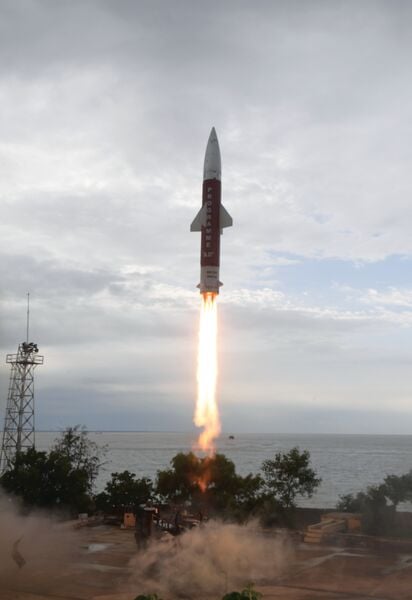
India's DRDO has described its Phase II BMD interceptor – seen here on its launch on 24 July – as a two-stage solid-propelled endoatmospheric missile system intended to neutralise ballistic missiles that operate in endo to low exoatmospheric altitudes. (Press Information Bureau)
India's Defence Research & Development Organisation (DRDO) has progressed the development of its Phase II Ballistic Missile Defence (BMD) interceptor through a flight test conducted on 24 July.
The Ministry of Defence (MoD) in New Delhi said the endoatmospheric interceptor – also known as the AD-1 missile – was launched from the DRDO's integrated test range (ITR) in Chandipur, Odisha, on India's east coast. The interceptor's maiden test was held in late 2022.
According to the MoD, the new test featured the launching of a target missile from the DRDO's ITR on Abdul Kalam Island, about 70 km south of Chandipur, at 1620 h local time. The Phase II interceptor was launched four minutes later.
The MoD said the test validated a “complete network-centric warfare weapon system”. This system included long-range sensors, a low-latency communication system, a mission control centre, and the interceptor missile, it said.
The MoD added, “The performance of the missile was monitored from flight data captured by range tracking instruments [such as] electro-optical systems, radar, and telemetry stations deployed by ITR Chandipur at various locations including on board [a] ship.”
The MoD described the interceptor as a two-stage solid-propelled endoatmospheric missile system “meant for neutralising many types of enemy ballistic missile threats in the altitude bracket of endo to low exoatmospheric regions”. The MoD has said that the AD-1 will be capable of intercepting missiles that have a range of 5,000 km.
Looking to read the full article?
Gain unlimited access to Janes news and more...







